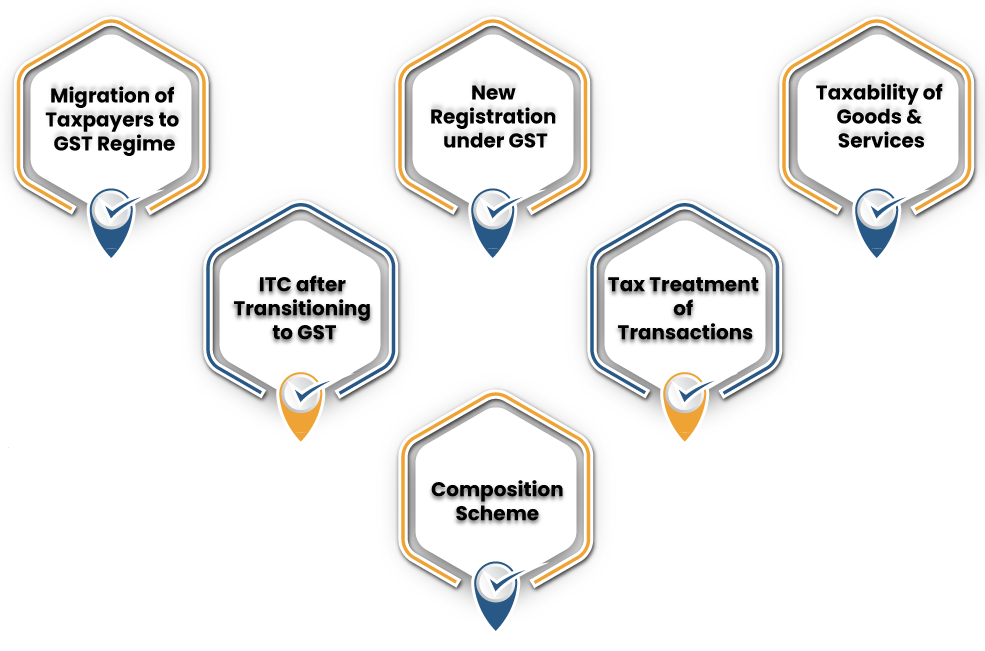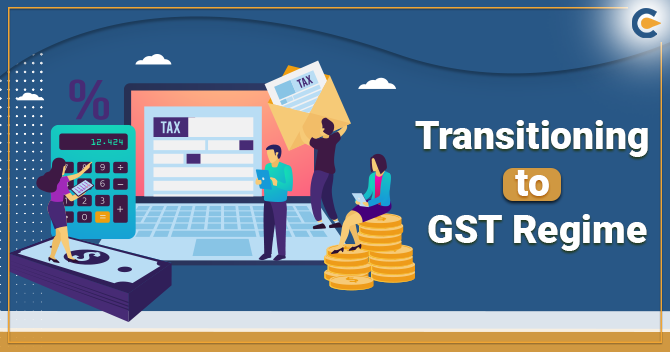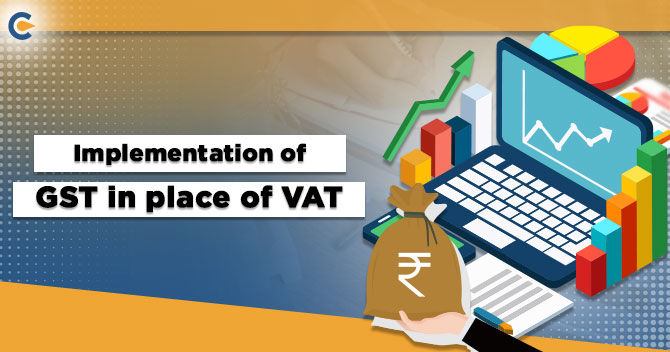The introduction of GST was made in the Constitution (122nd Amendment) Bill in December, 2014. The Goods and Service Tax Act was passed in the Parliament on March 29, 2017 and enforced on July 01, 2017. The new laws on value addition taxes have replaced all indirect taxes levied on goods and services by the central government and state government. In this blog we are going to learn about things to remember while transitioning to GST Regime. First let’s understand what is GST and ITC.
What is Goods and Services Tax (GST)?
The Goods and Services Tax (GST) is value-added tax levied on the supply of goods and services. GST is a comprehensive, multi-stage, destination-based tax that is levied on every value addition. Goods & Services Tax is a domestic indirect tax paid across the country.
What is Input Tax Credit (ITC)?
GST have one important fundamental feature of consistent flow of input credit over the chain followed across the country. Input Tax Credit is the tax paid by the purchaser on purchase of the goods or services. It describes that, at the point of paying tax on output, you can reduce the tax already paid on input and paid balance amount.
Read our article:16 Types of GST Return your Business should be Aware of!
What are the 6 Things to Remember While Transitioning to GST Regime?
The elements to be remembered along with legal provisions while transitioning to GST regimes are followed as:-


Migration of Taxpayers to GST Regime
The existing indirect tax payers who all are already registered under Excise/VAT/Service taxes, taxpayers would be migrated to GST regime. In this regime, they will be issued with GST registration and also obtain GSTIN. The grant for GST registration will be approved on completion of provided additional details.
New Registrations under GST
The new registrations can be done by the following individuals or company-
- New business
- Companies with an annual turnover less than INR 1.5 crores.
- Any dealer with annual turnover below INR 20 lakhs and are selling their goods or services online
- Any manufacturer having regular sale in inter-state area
- Voluntary registrations are permitted
Taxability of Goods and Services
In taxability of goods and services, the tax invoice issued on goods and services before implementation of GST, that will be taxed under earlier tax laws even after enactment too. Later, when the invoice is issued after implementation of GST that will be paid under GST as present law will be applicable.
ITC after Transitioning to GST
The new indirect tax laws (GST) carry forward the eligible credit of taxes induced under the earlier indirect tax laws into the GST regime. The transitional provisions allows with certain terms and conditions and opportunity to extend unutilized credits in different forms. Such as:
- Unavailed credit on capital goods, would not be allowed to carried forward in a return
- The credit of inputs held in stock used for taxable supplies under GST
- Credit for services received by an input service distributor (ISD) prior to implementation of GST, but invoice received post implementation
- Credit carried by a taxpayer having centralized registration
- Goods removed for job work, testing, and prior to implementation of GST but returned post implementation.
When there is transition provision, the taxpayers must ensure that all details as of record of receipts and other related documents with tax invoice must be safely stored till the appointed date of GST to avoid any credit loss.
To move your Input Tax Credit into the GST Regime, you are required to log in the GST portal and submit any one of the Forms that is either the TRAN-1 or the TRAN-2 as relevant. You have to mention the amount of tax as well as tax duty, whichever you wish to claim as ITC.
The application should also provide the following details:-
- Details of the supplier such as name of the supplier, sequence number and date of issue of the invoice by the supplier. Any other relevant document on the basis of which ITC will be admissible under the existing law.
- The quantity, description and value of the Goods & Services.
- The aggregate of eligible taxes as well as duties, the value added tax (or entry tax) charged by the supplier with respect to Goods & Services.
- The date on which the receiving of Goods & Services is entered in the books of account of the receiver.
The submitted request will be managed by the Tax Department. Upon approval, the amount of credit permitted will be credited to the credit ledger of the applicant under the Form GST PMT-2 on the Common GST Portal.
The transfer of credit to GST is alike for companies who were formerly registered under Excise duty, Service tax or VAT.
Tax Treatment of Transactions Spanning of the GST Regime
Goods and services supplied on and after the enforcement of GST shall be subject to GST.
In any of the contract entered prior to implementation of GST that affect increase or decrease in price of goods and services, further may be issued a debit or credit note. If any difficulty arises from issue of credit note, may lead to double taxation.
Tax liability could be regulated in condition, if recipient of the credit note reverses his corresponding credit. The challenge in adjusting the tax liability because of non-reversal of credit by the recipient would arise as per liability.
Under such transition provisions of GST, taxpayers may revisit the procuring strategies considering the taxation aftermath. It is recommended to revisit the existing contracts to mutually agree on the terms of contracts traversing the transition laws and the GST.
Composition Scheme
Composition scheme henceforward be another critical aspect of the transition process, as further the taxpayer should keep himself updated about the implication from migration into the new regime. Composition scheme is available for persons with annual turnover up to INR 50 lakhs.
Transition from previous tax regime to Composition scheme in GST
When a business owner decides to move from the former tax[1] regime to composition scheme under GST, it has to pay an amount equal to its available Input Credit. The ITC will be calculated based on the amount of input materials held in stock, including semi-finished as well as finished goods.
Configuration of Transitional Process
Extensive amounts of transitional compliances are required to extract utmost benefit on the application of GST. To avoid any litigation due to transition issue, taxpayers should evaluate transitional requirements and mandatorily note down the eligible credit accumulated. All pending refunds, assessments, litigations, proceedings and other relevant documentation is required to determine the status and impact stand up from transitional compliances.
Conclusion
As per the Good and/ or Services transition rules, a registered taxpayers can claim input tax credit from any of the central and state taxes (applicable in current GST regime) paid on goods and/ or services implemented after GST.
These key highlights relating transition issues that emerge on practical implementation. To avoid any the timely awareness and preparation efficient procedures required to be evolved to encounter the fiscal obligations of the upcoming transition.
Read our article:Step by Step Procedure for Registering the DSC on the GST Common Portal











